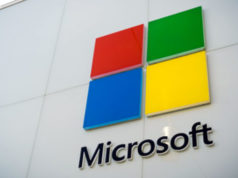Once the preserve of the business elite, wireless e-mail is undergoing a «democratization» process that will bring it to the masses, says research firm Gartner. Not only is wireless e-mail spreading across the enterprise, consumers increasingly will access their e-mail on mobile devices.
The group says there are fewer than 20 million business users of wireless e-mail worldwide, representing just 2 percent of all e-mail accounts. Analysts predict the progressive availability of products and services will allow 350 million business and consumer users access to wireless e-mail by 2010, meaning that 20 percent of all e-mail accounts will be wireless-enabled. Gartner expects wireless email to reach commodity status by 2012.
In addition, a growing number of employees will have the ability to access corporate email and other applications from personal devices. Traditional business-e-mail-centric devices are transforming into personal devices that span both professional and consumer life.
According to Monica Basso, research vice president at Gartner, growth in the consumer market will be fuelled by the increasing availability of wireless e-mail support, both in devices and from service providers as well as by improved usability. Corporate use also will also rise, she says, as enterprises come under increased pressure to provide real-time communications for their expanding mobile workforce.
«By 2012, wireless e-mail products will be fully interoperable, commoditized and have standard features,» Basso adds. «They will be shipping in larger volumes at greatly reduced prices.»
To deal with the sheer volume of business and personal e-mail, convergence is coming. «Convergence will happen on the client side, hiding technology complexity from users and allowing them to focus on messaging content,» Basso says. «By 2017, wireless e-mail will be fully integrated with other messaging tools into personal, converged communications. Companies like Microsoft, IBM, Nokia and RIM are already taking some steps in this direction.»
While Gartner sees consumerization of IT as the key trend influencing the rise in popularity of wireless e-mail both inside and outside of the enterprise, it also notes other trends and drivers influencing the phenomenon:
Changing market dynamics: Simpler, easier-to-use and less-expensive wireless e-mail bundles increasingly are available to the consumer. Careful planning also can result in cost-effective enterprise deployments.
Technology enhancements: A wide array of new e-mail-centric mobile devices, mobile service support for Exchange 2007 and the growing range of white-label platforms available for mobile operators and service providers are driving the adoption of wireless e-mail.
Evolving needs of user organizations, business users and consumers: Balancing security and the manageability risk of wireless e-mail against the rewards mobile workers afford enterprises is a key challenge.
Emerging and expanding service requirements: Different workers have different profiles and different technological needs. There is no one-size-fits-all solution, and a combination of different wireless e-mail products is required.
The rise of the «Digital Native:» New-generation IT users will prefer Web-based e-mail services to traditional corporate systems, and they will prefer to access e-mail on their personal multimedia «buddy» rather than on e-mail-centric business devices.
Fuente: Telecom Web

















